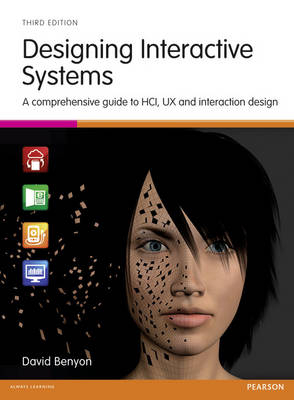
Designing Interactive Systems
Pearson Education Limited (Verlag)
978-1-4479-2011-3 (ISBN)
- Titel erscheint in neuer Auflage
- Artikel merken
Part I: Essentials of designing interactive systems
1. Designing interactive systems: A fusion of skills
2. PACT: A framework for designing interactive systems
3. The process of human-centred interactive systems design
4. Usability
5. Experience design
6. The Home Information Centre (HIC): A case study in designing interactive systems
Part II: Techniques for designing interactive systems
7. Understanding
8. Envisionment
9. Design
10. Evaluation
11. Task analysis
12. Visual user interface design
13. Multimodal user interface design
Part III: Contexts for designing interactive systems
14. Designing websites
15. Social media
16. Collaborative environments
17. Agents and avatars
18. Ubiquitous computing
19. Mobile computing
20. Wearable computing
Part IV: Foundations of designing interactive systems
21. Memory and attention
22. Affect
23. Cognition and action
24. Social interaction
25. Perception and navigation
1.1 The variety of interactive systems
1.2 The concerns of interactive systems design
1.3 Being digital
1.4 The skills of the interactive systems designer
1.5 Why being human-centred is important
2.1 Introduction
2.2 People
2.3 Activites
2.4 Contexts
2.5 Technologies
2.6 Scoping a Problem with PACT
3.1 Introduction
3.2 Developing personas and scenarios
3.3 Using scenarios throughout design
3.4 A scenario-based design method
4.1 Introduction
4.2 Accessiblity
4.3 Usability
4.4 Acceptability
4.5 Design principles
5.1 Introduction
5.2 Engagement
5.3 Designing for pleasure
5.4 Aesthetics
5.5 Service design
6.1 Introduction
6.2 Scenarios for the HIC
6.3 Evaluating early interface prototypes
6.4 A first design
6.5 The second interface design
7.1 Understanding requirements
7.2 Participative design
7.3 Interviews
7.4 Questionnaires
7.5 Probes
7.6 Card sorting techniques
7.7 Working with groups
7.8 Fieldwork: Observing activites in situ
7.9 Artefact collection and 'desk work'
8.1 Finding suitable representations
8.2 Basic techniques
8.3 Prototypes
8.4 Envisionment in practice
9.1 Introduction
9.2 Conceptual design
9.3 Metaphors in design
9.4 Conceptual design using scenarios
9.5 Physical deisgn
9.6 Designing interactions
10.1 Introduction
10.2 Expert evaluation
10.3 Participant-based evaluation
10.4 Evaluation in practice
10.5 Evaluation: further issues
11.1 Goals, tasks and actions
11.2 Task analysis and systems design
11.3 Hierarchical task analysis
11.4 GOMS: a cognitive model of procedural knowledge
11.5 Structural knowledge
11.6 Cognitive work analysis
12.1 Introduction
12.2 Graphical user interfaces
12.3 Interface design guidelines
12.4 Psychological principles and interface design
12.5 Information design
13.1 Introduction
13.2 Using sound at the interface
13.3 Tangible interaction
13.4 Getting a feel for tangible computing
13.5 Gestural interaction and surface computing
14.1 Introduction
14.2 Website development
14.3 The
| Erscheint lt. Verlag | 13.9.2013 |
|---|---|
| Verlagsort | Harlow |
| Sprache | englisch |
| Maße | 194 x 264 mm |
| Gewicht | 1510 g |
| Themenwelt | Informatik ► Software Entwicklung ► User Interfaces (HCI) |
| ISBN-10 | 1-4479-2011-2 / 1447920112 |
| ISBN-13 | 978-1-4479-2011-3 / 9781447920113 |
| Zustand | Neuware |
| Informationen gemäß Produktsicherheitsverordnung (GPSR) | |
| Haben Sie eine Frage zum Produkt? |
aus dem Bereich



